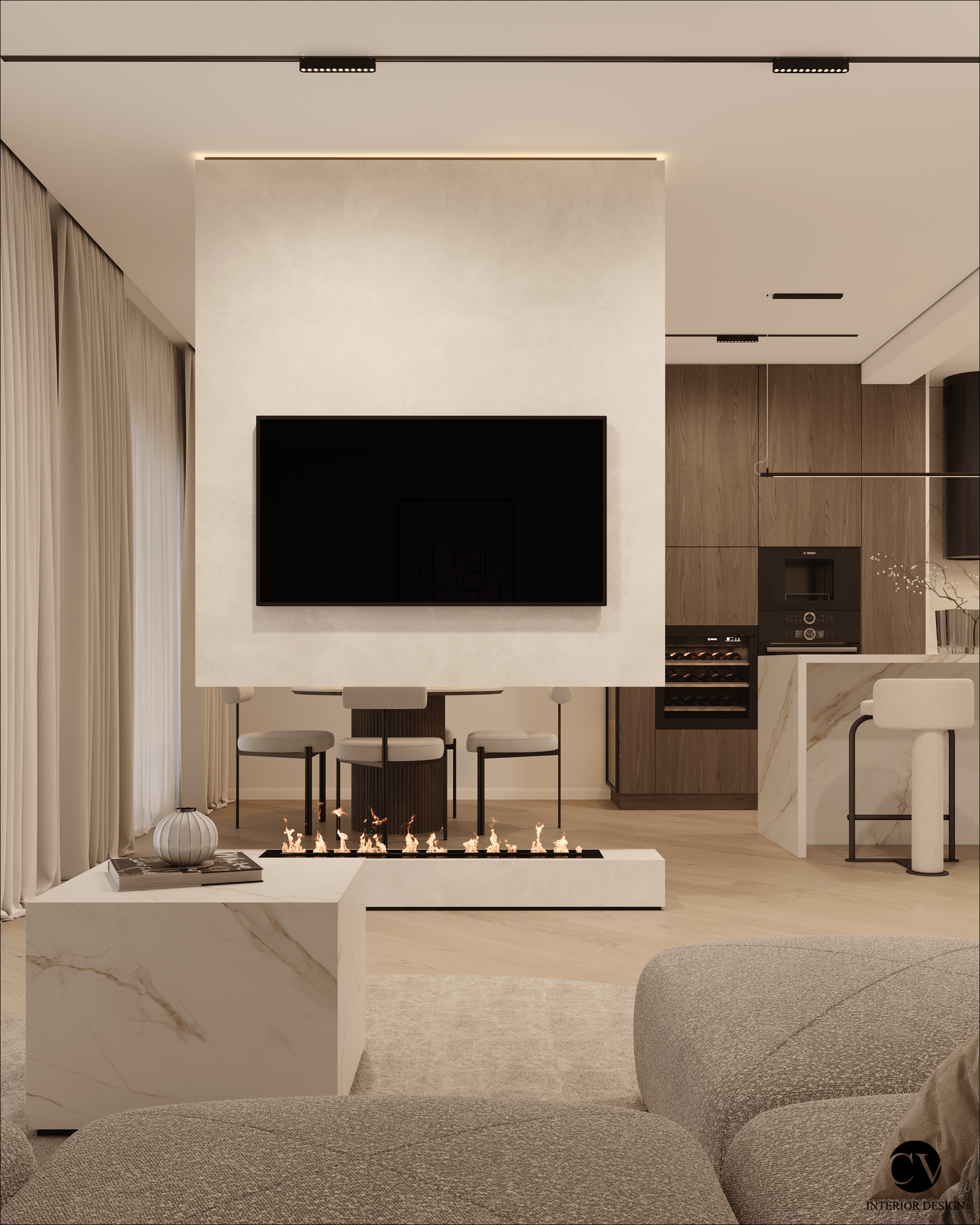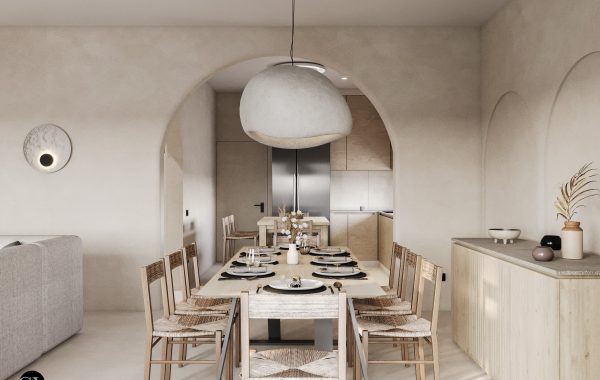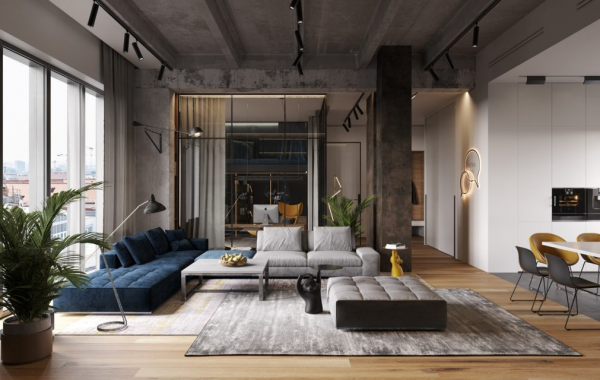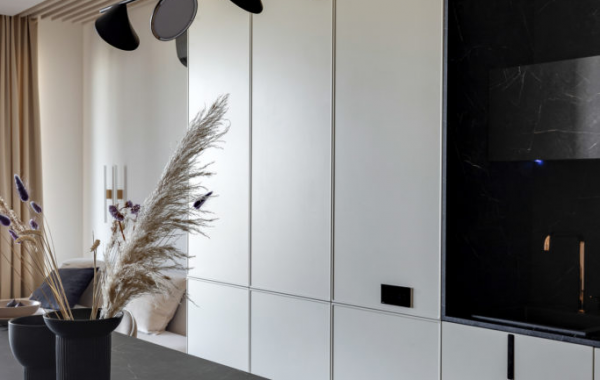Minimalism is not just a trend, but a philosophy of life that is reflected in interior design. Minimalism in interior design is not about living with as little as possible, but about intentionally choosing each element to create a balanced and harmonious space. Our global vision of minimalism embraces diverse cultural influences, reflecting a style that transcends borders.
The Concept of Minimalism in Modern Space
Minimalist design is not limited to a specific aesthetic, but takes a pragmatic and functional approach. At CVDesign, every project is a journey towards creating a space that meets the real needs of our clients, while maintaining an elegant simplicity. Thus, minimalism becomes more than a design; it’s a way of life.
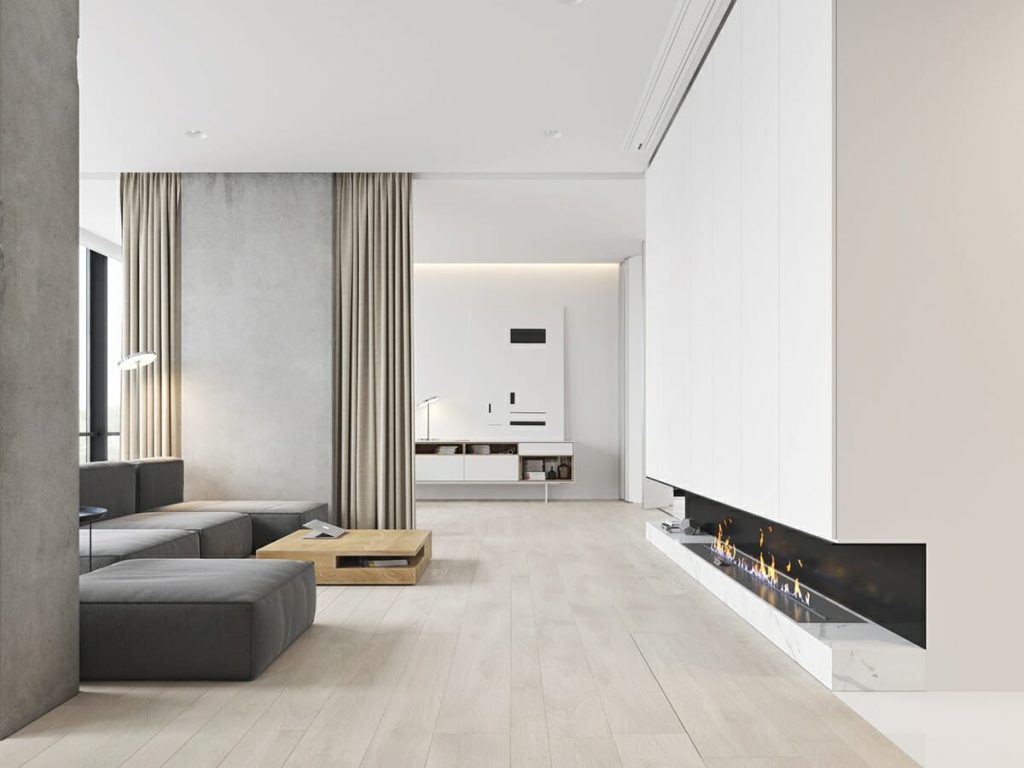
The History and Evolution of the Minimalist Design
Minimalist design, with its roots deeply rooted in the art and architecture movements of the 20th century, is a reflection of the desire for simplicity and functionality in contrast to excess and ornamentation.
This style began to gain ground in the 1960s and 1970s, heavily influenced by traditional Japanese architecture and the Bauhaus movement in Germany, both of which promoted the idea that form should follow function.
Minimalist designers such as Dieter Rams and Ludwig Mies van der Rohe pioneered the creation of spaces and objects that value clean lines, simplicity and a stripped-down color palette.
The evolution of this style was marked by a movement towards “calm” minimalism, where the quality of materials and comfort become as important as visual simplicity.
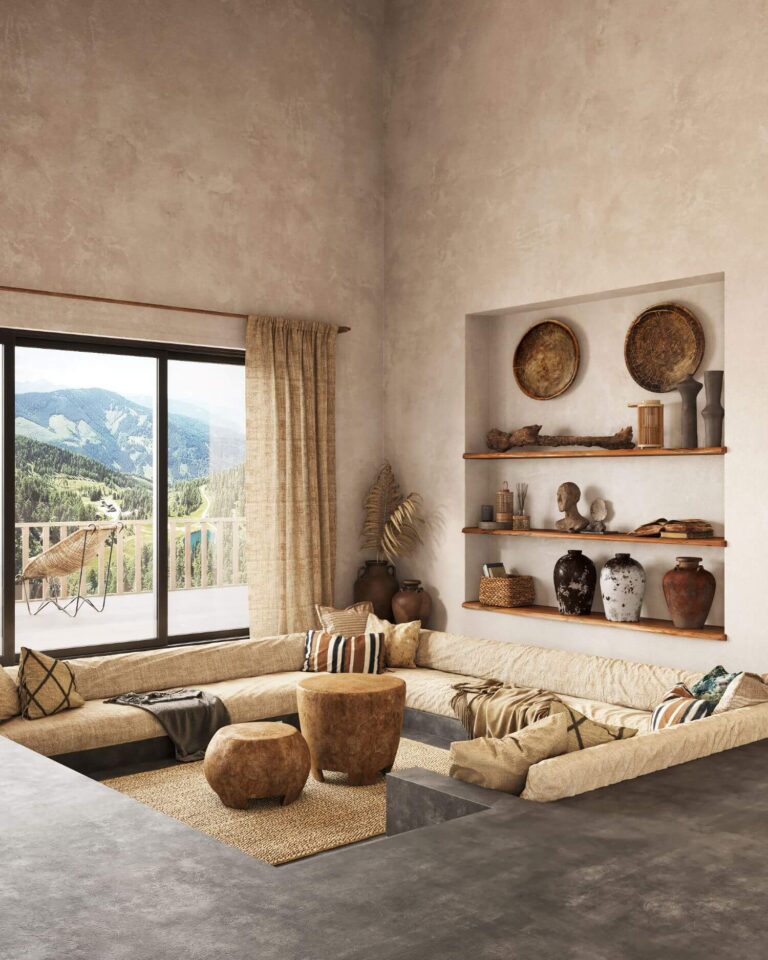
Why Is Minimalist Interior Design Popular?
Minimalist interior design has become extremely popular in recent years due to its sleek and uncluttered approach that resonates strongly with the modern lifestyle.
This popularity is fueled by the growing desire to declutter and simplify in an increasingly busy and stressful world. Minimalism offers an antidote to daily chaos, creating spaces that are not only aesthetically pleasing, but also functional and easy to maintain.
This style promotes an atmosphere of calm and order, facilitating relaxation and concentration. It is also often associated with sustainability, given the emphasis on quality over quantity and the careful selection of materials and objects.
Defining elements and characteristics of minimalist interior design
When talking about a Western minimalist style as we know it today, interiors with this aesthetic will often include:
- Simple lines
- Monochrome or neutral color palettes
- Limited furniture
- Limited decorative items
- Storage solutions that keep space uncomplicated
- Open floor plans
- Natural light
Principles of Minimalist Design
In today’s hectic and overloaded world, minimalist interior design comes as a breath of fresh air, offering a haven of calm and simplicity. Originating from the art and architecture movements of the 20th century, minimalist design gained popularity due to its balanced and refined approach.
The principle “Less is more” in Minimalist Design
Minimalist design is based on the principle that “less is more”. This philosophy emphasizes the need to simplify and remove unnecessary elements to create a clean and tidy space. In minimalist design, every piece of furniture and every decorative object is carefully chosen, ensuring that each has a purpose and adds aesthetic and functional value to the space.
This approach promotes a sense of calm and clarity, avoiding clutter and oversaturation. Neutral colors such as white, gray and beige are often used to create a calm and unifying background, while natural textures and material finishes add depth and visual interest without being distracting.
Functionality and Aesthetics in a Perfect Balance
Another key principle of minimalist design is the balance between functionality and aesthetics. Minimalist design isn’t just about visuals; it’s also about creating a practical and user-friendly space. The furniture is often simple, with clean lines and no unnecessary decorations.
The spaces are designed to be easy to navigate, with a clear flow and no unnecessary obstacles. The emphasis is on quality, not quantity, choosing furniture pieces and accessories that are durable and well made. Lighting also plays a crucial role, being used to accentuate the space and create the desired ambiance.
By combining these elements, minimalist design manages to create spaces that are both beautiful and functional, providing a calm and organized refuge in an often chaotic world.
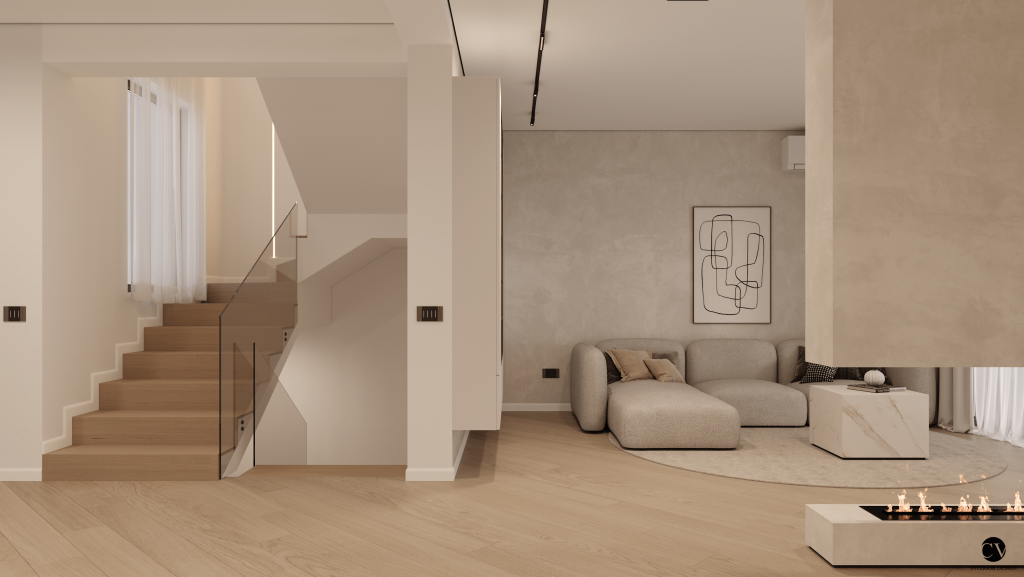
Conclusion
At CVDesign, we approach each project with an innovative perspective, respecting the principles of minimalism but adding a unique character to them. Whether it’s a living room or a kitchen, our minimalist design brings balance, beauty and functionality to every corner of your home. Discover more about our projects and how we can transform your space into a minimalist sanctuary.

